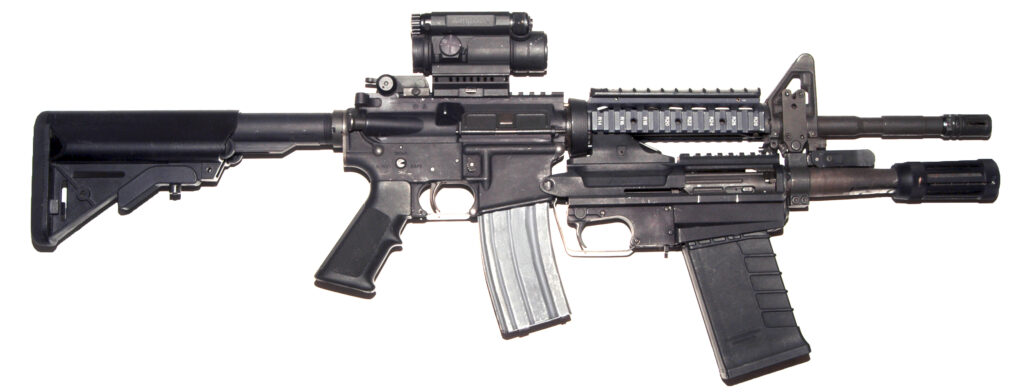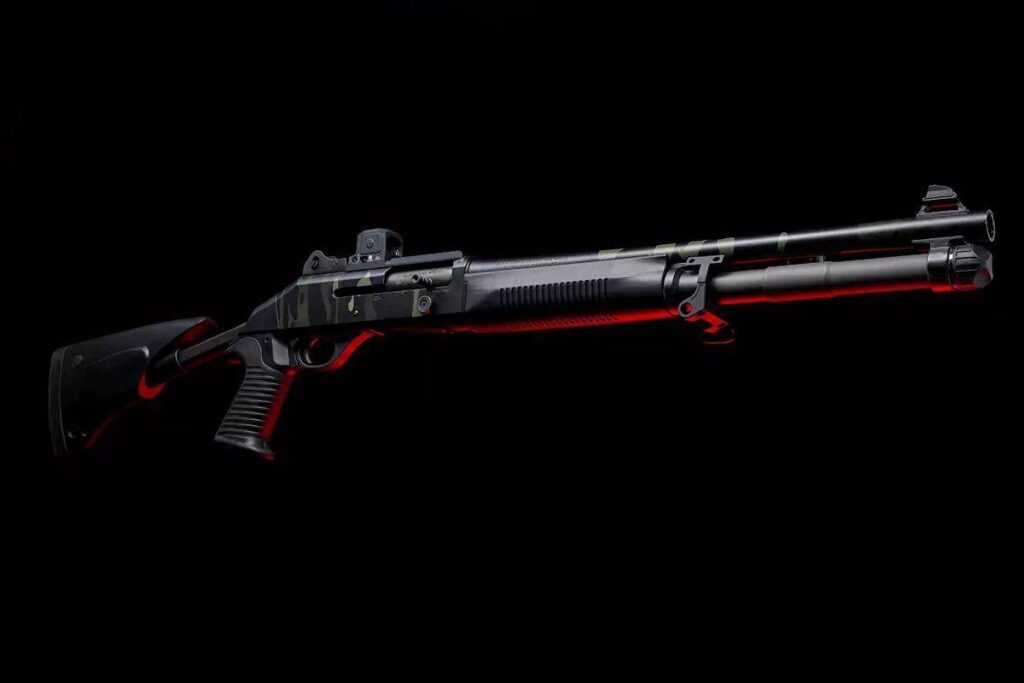The SIG MCX has been a big success for SIG Sauer. It’s their premier rifle and serves the civilian, military, and police markets. What I love about SIG Sauer is that they are almost always willing and able to produce the same variants they produce for military forces, sans select fire, for the average Joe. It’s a big selling point. With that in mind, how often is the military using the SIG MCX?
You’d be surprised. The MCX has seen a fair bit of success in the military, with five models being adopted by various forces. Well, five-ish models, but we’ll get into it. First, what exactly is the MCX? Let’s keep it a one-paragraph explanation.
The MCX is a modular rifle system designed to be easily converted to various calibers in a multitude of sizes. The weapon operates off a short-stroke gas piston design and makes use of an upper and lower receiver group. It negates the need for a receiver extension and allows for folding stocks. Additionally, SIG wisely adapted numerous AR influences when it comes to the gun’s ergonomics, layout, and magazine.
Advertisement — Continue Reading Below
M7 – Big Army
Obviously, the big subject of the current military small arms discussion is the M7, a.k.a. the XM5, a.k.a. the SIG SPEAR in 6.8x51mm. The M7’s goal is to blend a rifle with a fire control unit that will extend an individual’s effective range and increase an infantryman’s lethality. Armor-piercing function is desired, and this new, super high-velocity, high-pressure round is fascinating.
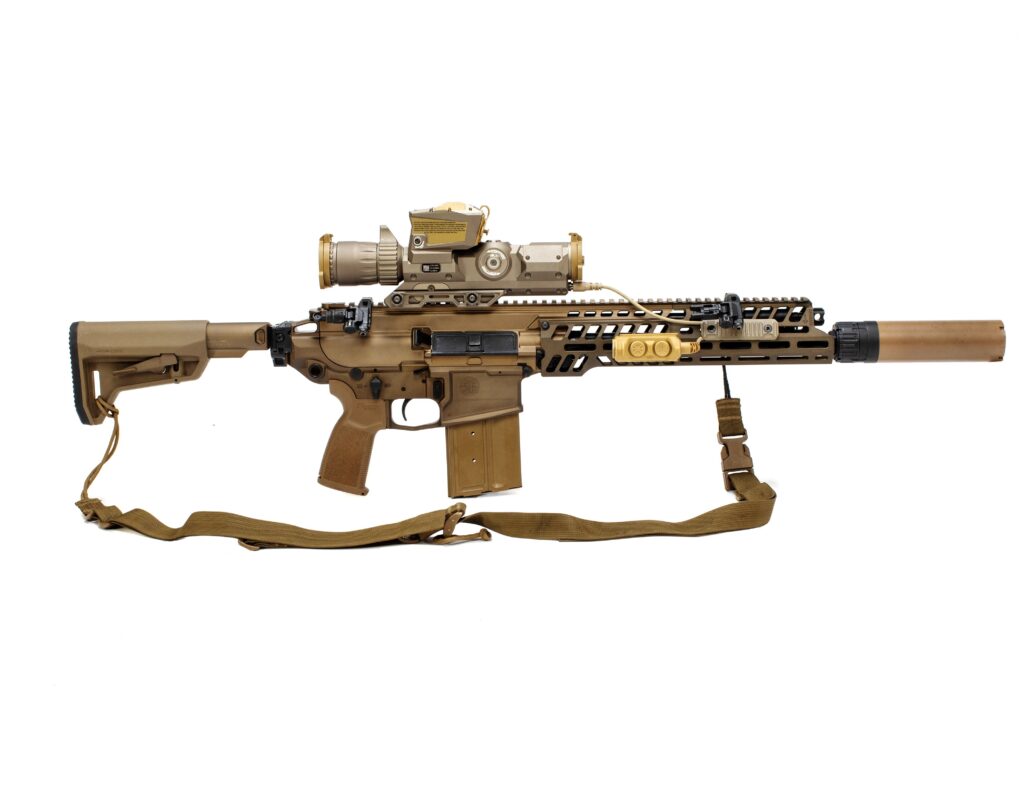
The SIG SPEAR is the AR-10 of the SIG MCX series. It’s designed for full-powered calibers, like the 6.8x51mm, but also 7.62x51mm and 6.5 Creedmoor. To use the common parlance, it’s a battle rifle that maintains the short-stroke gas piston design and modularity of the SIG MCX series, just bigger and more powerful.
Advertisement — Continue Reading Below
The M7 rifle is aiming to establish an overmatch capability against other military forces. The ability to hit them before they hit you is always a valid tactic. While the M7 hasn’t been fielded extensively just yet, time will tell if the concept plays out. I think the Army’s expectations are a bit much for an infantry rifle, but what do I know?
LVAW – JSOC
From what I can tell, the LVAW was the first adoption of the SIG MCX series by a military force. LVAW stands for Low-Visibility Assault Weapon, and it’s essentially a rifle-powered submachine gun replacement. As the name implies, it’s designed to be low-vis, and that necessitates both a short and compact platform and a quiet one.

Advertisement — Continue Reading Below
The LVAW is designed to be run suppressed, so much so that the barrel ends before the rail, and the rail encompasses a portion of the suppressor. The rifle fires the .300 Blackout cartridge, which makes it easy to suppress with subsonic loads, but allows for an easy swap to supersonic for extended-range engagements.
The LVAW has been seen in use by elite forces and was a JSOC program. This means DEVGRU (a.k.a. SEAL Team 6) and CAG (a.k.a. Delta) are fielding the platform for specialized mission roles. Notably, it’s been seen as part of personnel security details.
CSAW – JSOC
Another JSOC MCX is the CSAW variant. While the LVAW is the ultra-small platform, the CSAW, or Close Support Assault Weapon, is a more traditional assault rifle. It does sport a 10.5- or 14.5-inch barrel, so it’s in the Mk18/M4 size profile.
Advertisement — Continue Reading Below
It’s a 5.56 rifle that can be used the same way as the HK 416D, the Mk18, and similar platforms. It’s an all-around urban combat platform. It bears mentioning that the CSAW name has also been used with rifles like the HK 416.
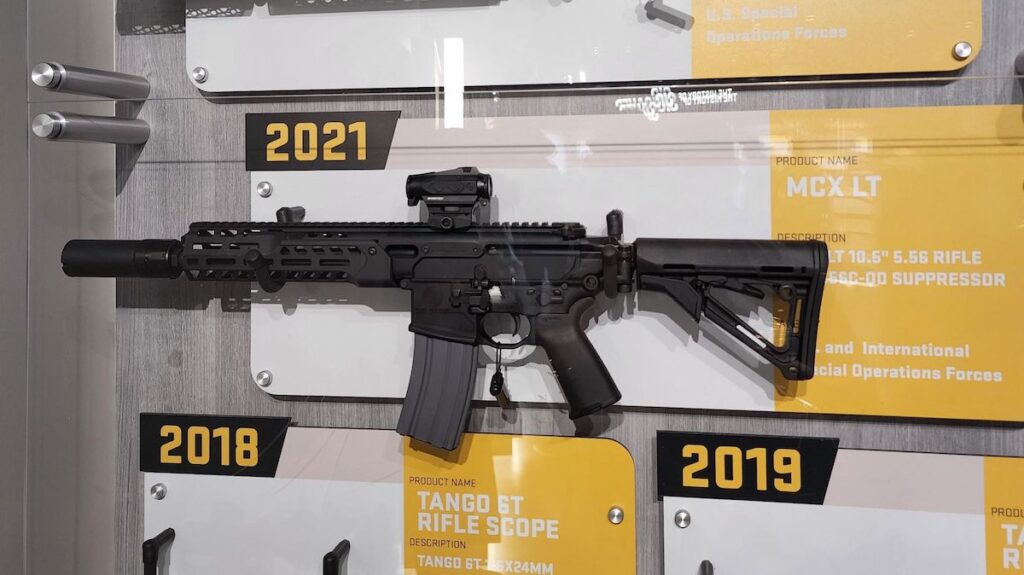
The CSAW is based on the SIG MCX SPEAR-LT, not to be confused with the heavy-duty SPEAR. SIG gets a little nutty with their naming conventions; the LT means Light, which means 5.56 or other intermediate cartridges. The CSAW variant is issued with the SIG SLX556C-QD suppressor.
Advertisement — Continue Reading Below
This variant also reportedly features strategic use of titanium to lighten weight without reducing strength. It’s unclear how far and wide the MCX CSAW has been issued, but Delta operators securing a Presidential event in Tel Aviv were seen wielding this new variation of the SIG MCX.
RSAR – SOCOM
SOCOM purchased the SIG Rattler, a PDW-sized platform of the MCX, and designated it the RSAR. RSAR stands for Reduced Signature Assault Rifle, and SOCOM purchased both .300 Blackout and 5.56 variants of this super-short rifle. The barrel length of the RSAR is 7.75 inches.
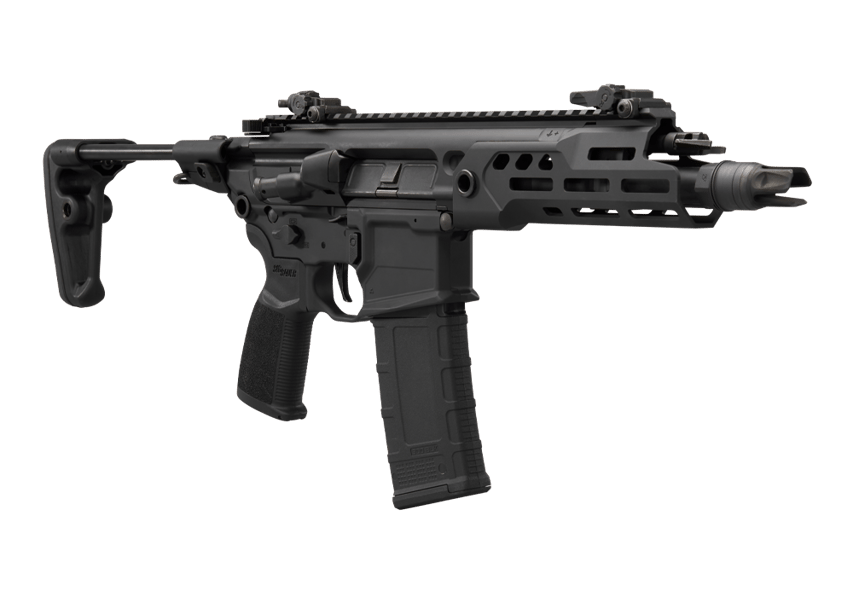
Advertisement — Continue Reading Below
It’s been theorized that the 5.56 variants were purchased for training purposes and the .300 Blackout was for operational use. The .300 Blackout performs much better from short barrels than 5.56. Much like the LVAW, the RSAR will be fielded with a suppressor to reduce the rifle’s signature. One interesting part of the contract mentioned a 7.62x39mm version as well.
This uber-small weapon will serve with personal security details and for low-visibility operations. It’s incredibly small and lightweight. SIG made a version of the RSAR available for the commercial market as the RSAR999.
SURG – SOCOM
Remember when I said five-ish? Well, the five-ish comes down to the SURG. SURG stands for Suppressed Upper Receiver Group. It’s not a complete weapon; it’s a suppressed upper receiver designed to outfit M4A1 lower receivers. The SURG is also available on the civilian market but requires a tax stamp.
Advertisement — Continue Reading Below

The SURG series features a direct-thread Inconel suppressor that’s surrounded by a titanium heat shield. It resembles a cage. This is to prevent operator burns when used in close quarters and helps reduce suppressor mirage when used extensively.
The short-stroke gas piston system prevents gas blowback to the operator’s face and allows for excellent and comfortable suppression. Of all the guns on this list, this is the only one I’ve personally fired, and I absolutely adored it.
Advertisement — Continue Reading Below
The MCX In Military Service
The MCX series helped jump-start modern short-stroke piston designs. It’s remained a very popular option for special operations use, and with the M7, it’s becoming the main firearm of the United States Army. The future is bright for the MCX.


